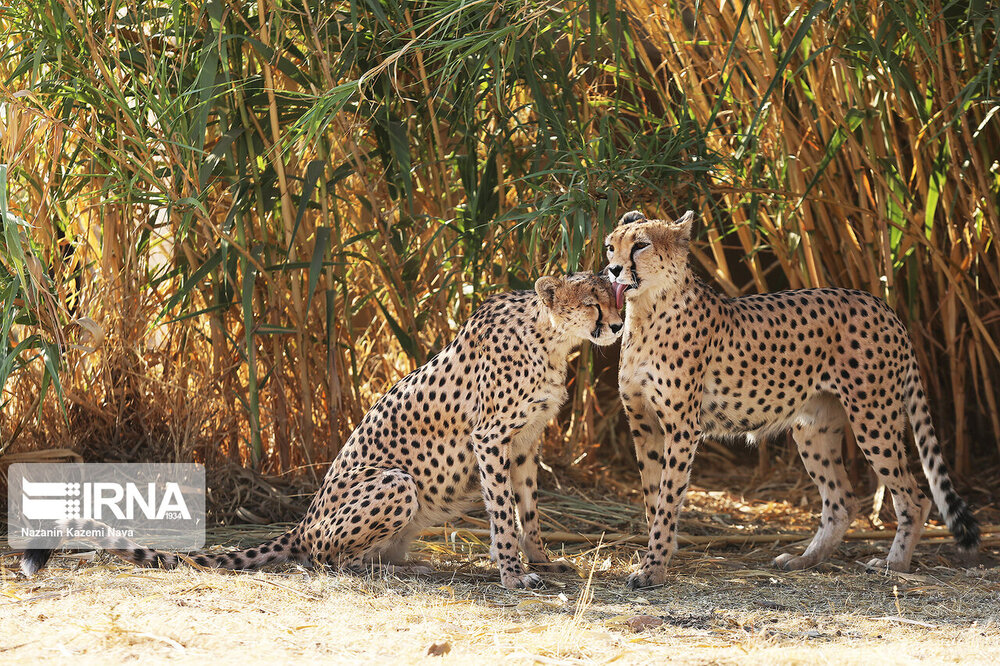Document on protection of felines inhibiting with cheetahs approved

TEHRAN – A national document on protection of felines inhibiting with cheetahs has been adopted in seven provinces of the country, IRNA reported on Saturday.
During the steering committee meeting of the international project on conservation of Asiatic cheetahs held online Saturday, Shahaboddin Montazemi, deputy head of the Department of Environment (DOE), said that utilizing the capacity of local communities, stakeholders, and participatory conservation to protect the Asiatic cheetah is one of the programs of the DOE for Natural Resources and Biodiversity.
Using the potential of other devices and international communities will be of great help in protecting ecosystems and animal species, he further highlighted.
Mazen Gharzeddine, Deputy Resident Representative of the United Nations Development Program (UNDP) in Iran, pointing to the success of the project activity over two decades, emphasized the use of knowledge and experience of the project in other parts of the country and many countries around the world.
The meeting was attended by officials and representatives of the Ministry of Foreign Affairs and the UNDP Office in Iran, managers, and representatives of the DOE, general managers of 7 provinces, consultants and experts in the field of the natural environment, project experts team.
At this meeting, it was decided to present the annual report of the project, as well as to provide the financial needs of the project by the DOE and UNDP and continue cooperation.
In 2001, conservation of the Asiatic Cheetah Project (CACP) is a comprehensive conservation program established by Iran’s government and United Nations Development Program (UNDP) and several concerned national and international NGOs to reverse the endangered specie’s drastic decline.
The project has been comprised of three phases aiming at research, protection, and training courses for the integration of local communities as active partners in protected areas, the first phase was co-funded by the Global Environment Facility and was implemented from 2001 to 2008, while the second phase went into effect in 2010.
The project was implemented on some 5 regions in 6 provinces of the country, through which some 47 cheetahs have been identified over the past three years.
Through the third phase of the CACP, all the solutions are classified in three fields of strengthening managing methods and optimization, the participation of local communities, and calling on stakeholders to conserve the precious species.
Fastest mammal endangered
Over the past 60 years, Iran is home to the last known population of Asiatic cheetah, which once roamed across vast ranges of the west and south Asian countries, from the Middle East to India. Listed as critically endangered by the IUCN, the Asiatic cheetah is among the rarest cats in the world at the subspecies level, with fewer than 50 believed to remain in Iran.
Cheetahs’ habitats in Iran are stretching over 12 million hectares of land area and over the past 16 years only experts collaborating with the CACP project have strived to count 48 cheetahs using trap cameras and other technical methods, Majid Kharrazian-Moqaddam, director of aquatic wildlife and biodiversity office at the DOE, said in August 2018.
Roadkill constitutes 70 percent of cheetahs’ fatalities, as some 42 Asiatic cheetahs have been killed in the country during the past 16 years, 28 of them died in road crashes and 14 others were either killed in conflicts with guard dogs or due to other unknown reasons, he lamented.
For one Abbasabad-Mayami road, linking north-central Semnan province to Mashhad, the northeastern province of Khorasan Razavi, is one of the deadliest roads for Asiatic cheetahs as 8 cheetahs have been killed in this area over the past 10 years.
Roads fragmenting cheetahs’ habitats are the main threats for the species, while guard dogs and stray dogs, drought spells, decreasing population of the prey species to support the cheetahs, and habitat loss are also other factors endangering the sparse population of the cheetahs in the country.
FB/MG
